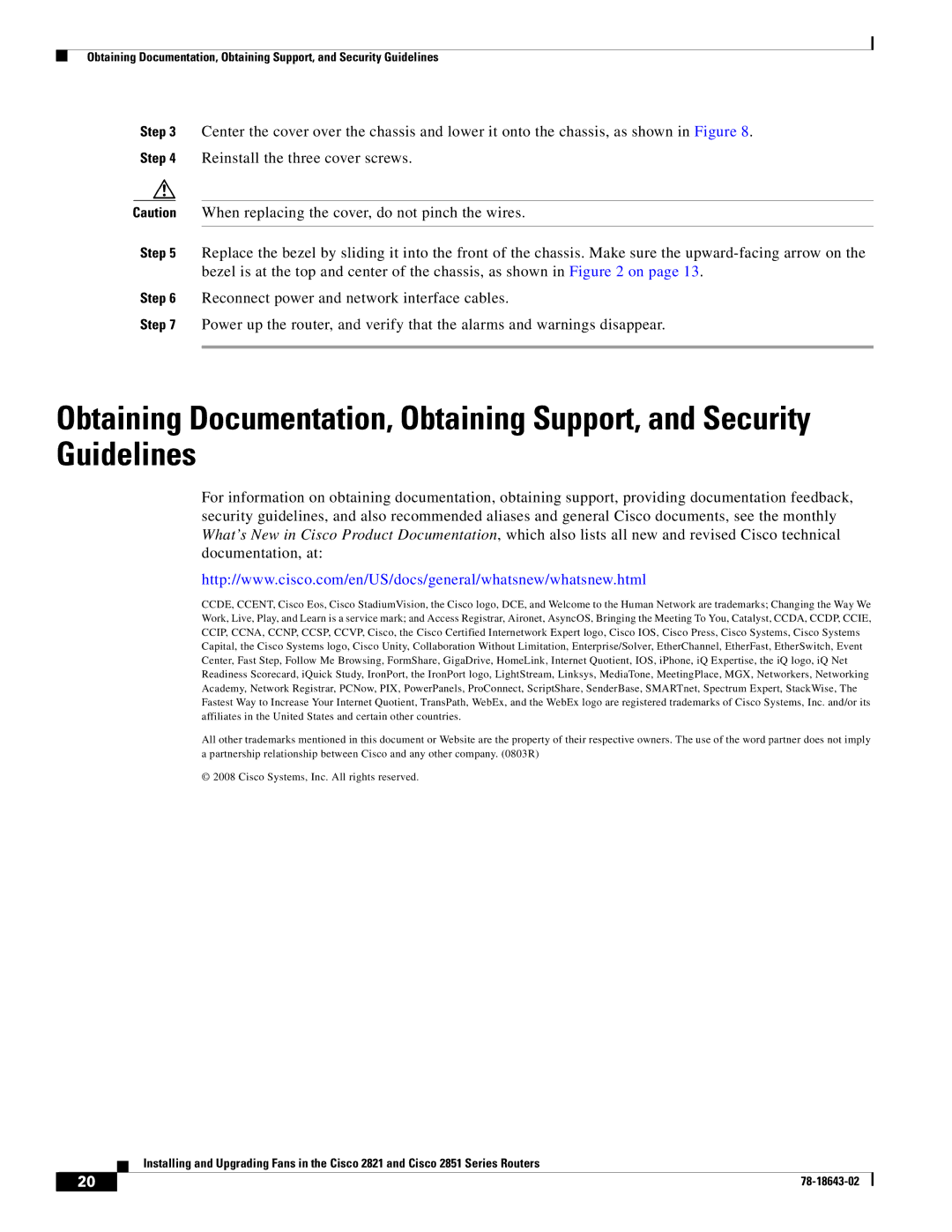2851 Series, 2821 Series specifications
Cisco Systems has long been a leader in networking technology, and the 2821 and 2851 Series routers exemplify the company’s commitment to delivering robust, versatile, and scalable networking solutions. Designed for small to medium-sized businesses and enterprise branch offices, these series are ideal for organizations looking to enhance their network functionality while maintaining cost-effectiveness.The Cisco 2821 Series is designed for flexibility and performance. It supports a variety of advanced security features, including IPsec VPN, firewall capabilities, and intrusion prevention. Its modular design allows for the addition of various interface cards, which makes it highly customizable based on the specific needs of the organization. The 2821 router can handle up to 24,000 sessions, making it suitable for multiple simultaneous connections without compromising performance.
Another significant characteristic of the 2821 Series is its support for voice over IP (VoIP) technologies. It can integrate voice and data on the same network, reducing costs and simplifying management. Furthermore, it supports Cisco's Unified Communications, allowing organizations to introduce advanced telephony features seamlessly.
Upgrading to the Cisco 2851 Series provides even greater performance and capabilities. The 2851 offers increased throughput and improved scalability, supporting a more extensive range of applications. It also includes enhanced support for integrated security features, enabling organizations to further protect their data and network assets.
Both series utilize Cisco's IOS Software, which enables a variety of services, from quality of service (QoS) to network management tools. These routers are designed to handle multiple applications simultaneously, making them ideal for today’s network environments that demand high availability and performance.
The 2821 and 2851 Series routers also feature redundant power supplies and fan modules, ensuring maximum uptime and reliability. Their robust build quality and durability make them suitable for various environments, from office spaces to industrial settings.
In summary, Cisco's 2821 and 2851 Series are built to provide robust networking solutions for businesses of all sizes. With features focused on modularity, security, and integrated voice capabilities, these routers are adept at meeting the diverse needs of contemporary organizations while setting the foundation for future growth and scalability.

